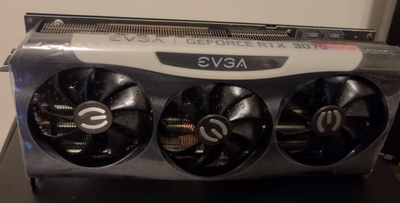
Using the EVGA RTX 3070 FTW3: great for gaming and productivity tasks (2024)
My thoughts on using the EVGA RTX 3070: performance upgrades, installation hurdles, and EVGA’s future impact.
Introduction
In one of the workstations at the office I recently upgraded the graphics card to the EVGA GeForce RTX 3070 FTW3 ULTRA GAMING. The visual improvement is quite noticable. I did encounter some installation issues however. More on my experience below.
Some photos (click to enlarge)
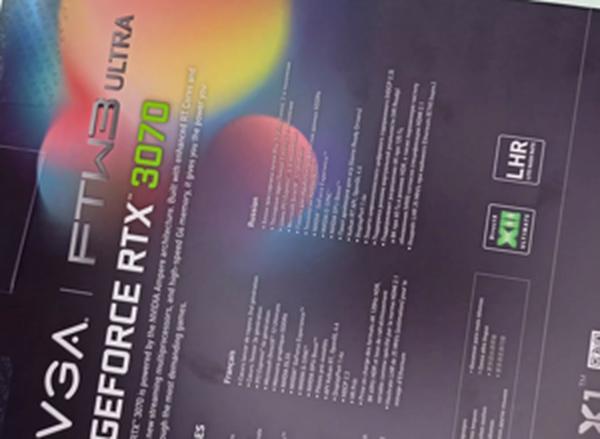
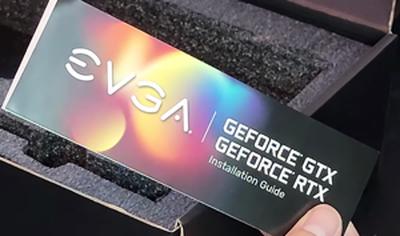
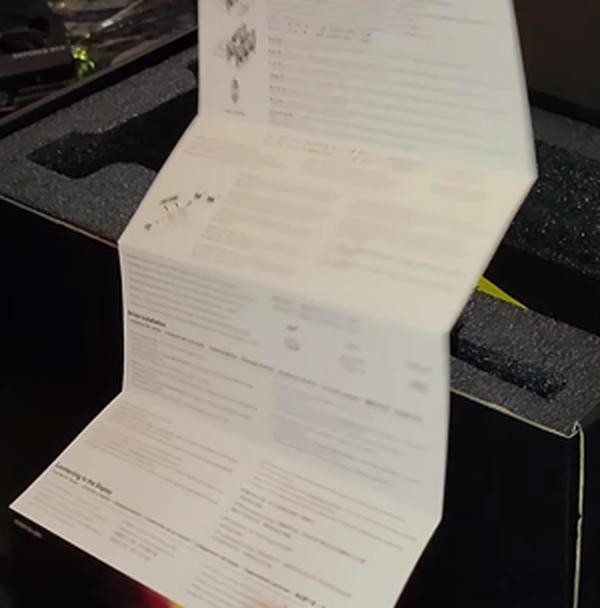
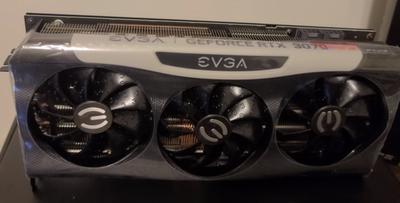
Specs of the EVGA RTX 3070 FTW3 Ultra Gaming
- Release Year
- Brand
- Graphics Coprocessor
- Graphics Ram Size
- Graphics Processor Manufacturer
- Gpu Clock Speed
Prices
My New Graphical Powerhouse
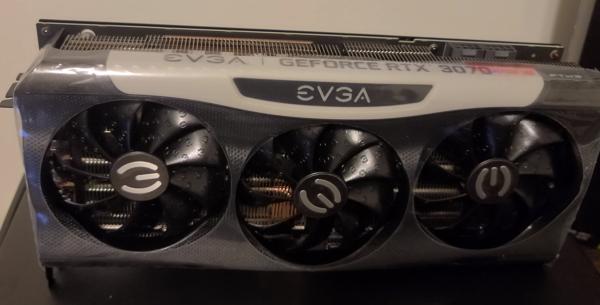
Upgrading to the EVGA GeForce RTX 3070 FTW3 ULTRA GAMING card has propelled my gaming experience into a new realm of visual prowess. This powerhouse, with its 8GB of GDDR6X memory and a real boost clock of 1815 MHz, has significantly improved performance, delivering a seamless and immersive gaming experience unlike anything I've had with previous cards.
Here's a quick rundown of what stands out to me:
Performance: The leap from my old EVGA GTX 960 to the RTX 3070 is immense. In-game elements come to life, with more detailed environments and incredibly realistic lighting thanks to the ray tracing capabilities.
Aesthetics: The card looks as good as it performs with a sleek all-metal backplate and customizable ARGB lighting, which adds to the visual appeal of my gaming setup.
Fan Noise: While the card operates quietly under most conditions, it can get a bit loud when tackling more graphically intense tasks.
Size: The imposing stature of the card is something to take into account. Its hefty form factor meant I had to make physical modifications to my case for it to fit.
Despite these standout features, I have noticed a few drawbacks. The size of the card presented a challenge during installation, requiring some unexpected DIY case modification. Additionally, the fan occasionally makes a noise that, while not affecting performance, can be distracting. Another point to consider is the hefty power draw, which at a significant 300W, is higher than many other 3070 models.
However, when it comes to graphics cards, I prioritize performance and reliability, and EVGA has been a favorite brand of mine for their consistent quality and solid customer support. It is a shame that they're leaving the GPU market, as this purchase feels even more significant knowing it may be one of the last products of its kind from EVGA.
The visual upgrade I've witnessed in games such as the Resident Evil remakes has been striking. The sharpness, lighting, and overall fidelity had me taking moments just to appreciate the scenery — something I couldn't have done with my older setup. Despite the occasional fan noise and steep power requirements, the decision is clear. This card is top-notch for anyone looking to push their gaming to the next level, especially if you manage to get it at a good price.
Delving into this graphical behemoth's capabilities, it's evident that the EVGA RTX 3070 FTW3 Ultra isn't just a piece of hardware; it's an essential component in crafting deeply immersive gaming worlds. Its minor downsides are far outweighed by the leaps in performance that genuinely enhance every gaming session.
Performance Leap in Gaming

Upgrading to the EVGA GeForce RTX 3070 FTW3 ULTRA GAMING card has truly transformed my gaming experience. The leap in performance from my previous graphics cards has been nothing short of astonishing, providing a notably smoother and more immersive experience.
The most significant improvements I've observed are:
Real Boost Clock: With a clock speed of 1815 MHz, my games have never been this fluid and responsive.
Memory Upgrade: The jump from a GTX 960 with lesser memory to a robust 8GB GDDR6X on the RTX 3070 is remarkable.
Ray Tracing: Real-Time ray tracing capabilities mean that lighting in games is more realistic than ever before, creating an incredible level of immersion.
Temperature and Noise: Despite high performance, the card operates at a surprisingly low noise level, maintaining a consistent temperature even when under load.
The EVGA's iCX3 Technology ensures cool temperatures and quiet gameplay, which is crucial for those long gaming sessions. In addition, the ARGB LED and all-metal backplate don't just add to the aesthetics but also provide structural rigidity.
However, it's important to note a few cons:
Size: Its large form factor can be a challenge for smaller PC cases.
Compatibility: Make sure to have additional power cables if your PSU doesn't come with the right ones.
Playing graphically demanding titles like the "Resident Evil" remakes has been an eye-opener with this card. The graphics are now breathtakingly detailed, and performance-wise, the difference is day and night compared to older GPUs. It's surprising how much the gaming landscape has advanced, and being able to match that with capable hardware is truly satisfying.
Despite the size snag, which required some case modifications, the process taught me a valuable lesson about checking component sizes in advance. It's relatively minor but crucial to consider for those considering this GPU. The necessity for additional power with a new cable is a hidden cost to keep in mind, but once everything was connected, performance was truly top-notch.
In terms of the brand, EVGA has always been my go-to due to their supportive customer service, and while their exit from the GPU market is a loss, I'm grateful for their legacy of quality products. Given the chance, I'd surely pick up another one of their cards.
Though the EVGA RTX 3070 FTW3 ULTRA GAMING card may feel a little pricey and admittedly intimidating in size, the performance leap it brings to gaming is indisputable. Its ability to handle everything thrown at it with poise makes it a worthy investment for avid gamers looking to push their visual experience to new heights.
Installation and Compatibility Challenges

The moment I received the EVGA GeForce RTX 3070 FTW3 ULTRA GAMING graphics card, I was eager to enhance my PC's performance. However, installing this beast of a card posed some unexpected challenges. Here's a rundown of my experience:
Size: The card's physical size is substantial; it's a behemoth compared to my old evga gtx 960.
Power Requirements: It requires a significant amount of power. I had to get a new EVGA VGA cable to accommodate the single 8-pin connector from my 1000 watts PSU.
Installation Space: My case was a tight fit. I had to make some modifications to accommodate this new GPU by removing metal bars with a hammer.
While these hurdles were intimidating, I knew that the end result would be worth it. After ensuring that my power supply was up to the task and doing a bit of case modding, the RTX 3070 was ready to go. One snag I encountered was when my CPU fan popped off during the installation process, which left my computer at a crawl until I noticed the issue and fixed it.
The card’s All-Metal Backplate & Adjustable ARGB not only offers durable protection but also adds a sleek, customizable aesthetic to my setup. Despite its size, once properly seated, the graphics card looked impressive within my rig.
From a compatibility standpoint, future builds should take into account the expansive hardware dimensions. Anyone planning to install it should ensure they have enough clearance in their case, perhaps opt for a standard ATX motherboard over a micro-sized one, especially if considering additional hardware expansions.
On the plus side, my upgrade to the RTX 3070 was like night and day in terms of performance. Games that previously looked good on the gtx 960 now look stunning, and even Resident Evil 4 remake graphics are super immersive with the card's Real-Time RAY TRACING capabilities.
Despite the initial difficulties, the high frame rates, ultra graphics settings, and quiet fan performance (barring the occasional weird noise from one of the fans touching the housing) made this upgrade from my previous card, a 2070 super, completely worthwhile.
It's a bittersweet realization that EVGA may not be around much longer in the GPU market. Even though I had to overcome several obstacles to get this card up and running, the quality of the product and my longstanding confidence in EVGA's support and functionality reassure me that it was the right choice.
Should you chance upon this EVGA gem in the market, ensure your system is equipped to handle its grandeur in both size and power needs. The performance upgrade will likely impress you, just as it has done for me. As I marvel at the graphics capabilities it brings to my desktop, it's clearly a remarkable piece of technology that has revitalized my gaming and potentially future-proofed my rig for years to come.
Reflecting on EVGA’s Legacy

Reflecting on the legacy of EVGA, particularly in light of my recent experiences with the RTX 3070 FTW3 Ultra, evokes mixed feelings. The brand, known for its reliability and customer service, has left an indelible mark on my personal PC-building journey. My evolution from earlier GPUs to the latest RTX 3070 is a testament to EVGA’s commitment to quality and performance. However, this reflection is tinged with a bittersweet realization of the company's departure from the GPU market.
When considering EVGA's impact, several key points come to mind:
Consistent Quality: Their graphics cards have always been reliable.
Customer Support: Access to a supportive and helpful customer service team made troubleshooting much less daunting.
Innovation: Features like iCX3 Technology and adjustable ARGB lighting on the RTX 3070 are prime examples of EVGA's push for cutting-edge tech.
Community: EVGA built a strong community of enthusiasts, which I have been proud to be part of.
The EVGA RTX 3070 FTW3 Ultra not only improved my gaming experience with its real-time ray tracing and high boost clock but also stood out as a testament to the engineering prowess of EVGA. Despite navigating installation challenges due to its size, the performance gain was undeniable and worth the initial hassle. The card’s aesthetics with its all-metal backplate and ARGB lighting also added a premium feel to my build that few other cards could match.
On the flip side, the end of EVGA's GPU production dashes any hopes of future upgrades with the brand. It also leaves a gap in the market for other manufacturers to fill, possibly without the same level of commitment to quality I’ve come to rely on with EVGA.
From a personal stance, I will deeply miss the assurance of buying from a company that seemed to not only understand but also anticipate the needs of its customers. It’s a rare quality that isn’t always easy to come by in the tech industry. Their exit is not just the end of an era for their products but for the customer-first approach they championed.
While my thoughts oscillate between appreciation for the exceptional performance of my new RTX 3070 and a hint of concern for future GPU choices, I take solace in knowing that what I have now is a piece of EVGA’s lasting legacy. It’s a legacy that, for many like myself, provided the backbone for countless hours of gaming and content creation, and while the future without EVGA’s presence in the market is uncertain, their mark on the industry will undoubtedly endure.
Comments (0)
Share